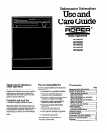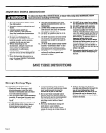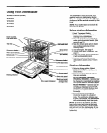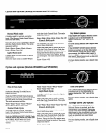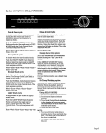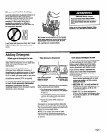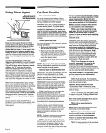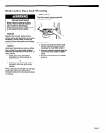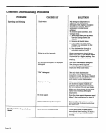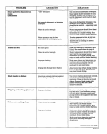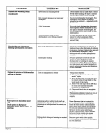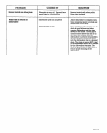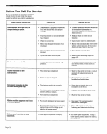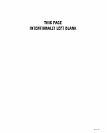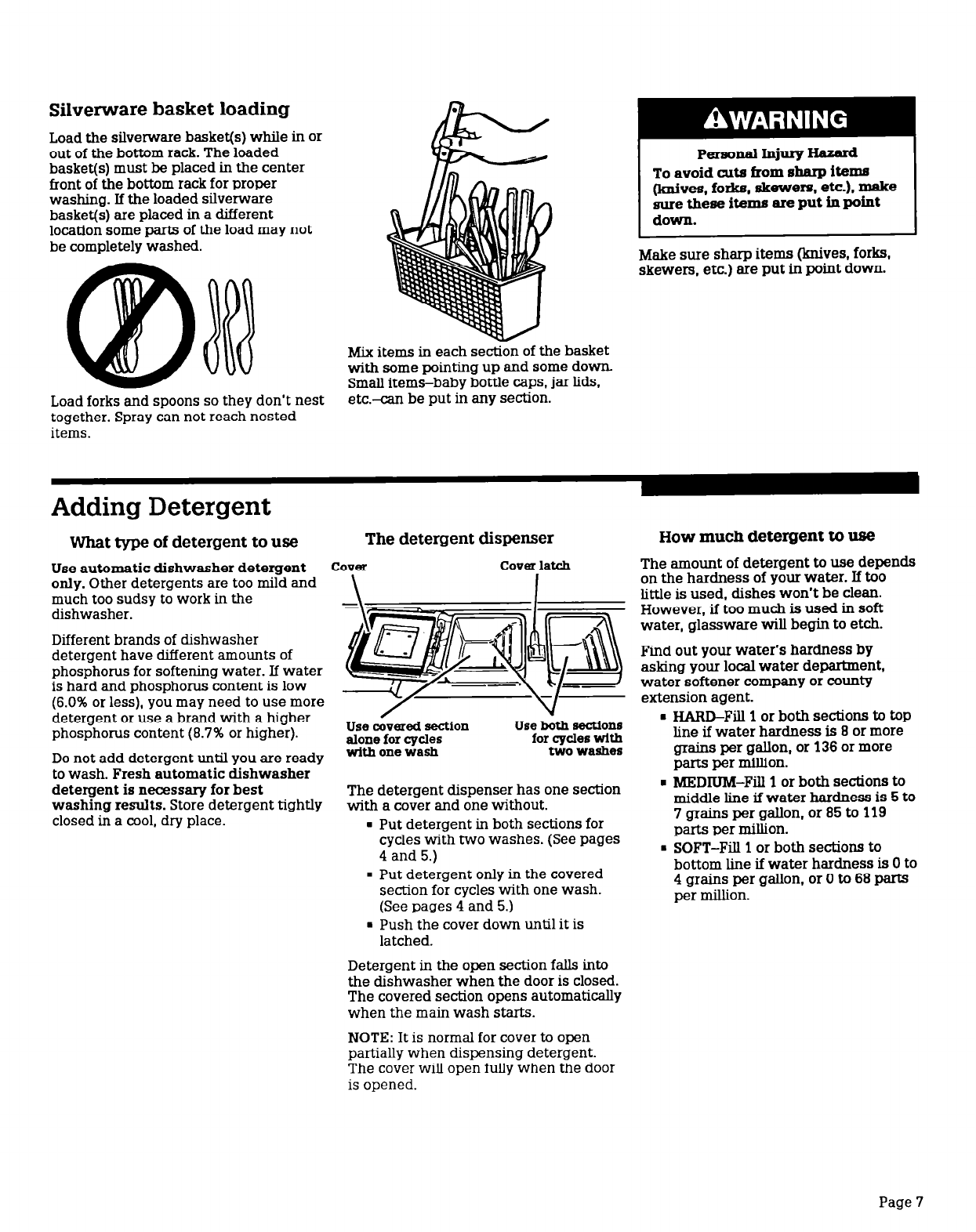
Silverware basket loading
Load the silverware basket(s) while in or
out of the bottom rack. The loaded
basket(s) must be placed in the center
front of the bottom rack for proper
washing. If the loaded silverware
basket(s) are placed in a different
location some parts of the load may not
be completely washed.
Load forks and spoons so they don’t nest
together. Spray can not reach nested
items.
Mix items in each se&m of the basket
with some pointing up and some down
Small items-baby bottle caps, jar lids,
etc.-can be put in any section.
Personal Injuqf Hazard
To avoid cuts from ehaxp itexna
(knives, forks, skewers, etc.), make
sure these items are put in point
down.
Make sure
sharp items (knives, forks,
skewers, etc.) are put in point down.
Adding Detergent
What type of detergent to use
The detergent dispenser
Use automatic dishwasher detergent
cover
Cover latch
only. Other detergents are too mild and
much too sudsy to work in the
dishwasher.
Different brands of dishwasher
detergent have different amounts of
phosphorus for softening water. If water
is hard and phosphorus content is low
(6.0%
or less), you may need to use more
detergent or use a brand with a higher
phosphorus content (8.7% or higher).
Do not add detergent until you are ready
to wash.
Fresh automatic dishwasher
detergent is necessary for best
washing
results.
Store detergent tightly
closed in a cool, dry place.
use covered section
alone for cycles
with one wash
The detergent dispenser has one section
with a cover and one without.
n
Put detergent in both sections for
cycles with two washes. (See pages
4 and 5.)
. Put detergent only in the covered
section for cycles with one wash.
(See pages 4 and 5.)
n
Push the cover down until it is
latched.
Detergent in the open section falls into
the dishwasher when the door is closed.
The covered section opens automatically
when the main wash starts.
NOTE: It is normal for cover to open
partially when dispensing detergent.
The cover will open fully when the door
is opened.
How much detergent to use
The amount of detergent to use depends
on the hardness of your water. If too
little is used, dishes won’t be clean.
However, if too much is used in soft
water, glassware will begin to etch.
Find out your water’s hardness by
asking your local water department,
water softener company or county
extension agent.
l
HARD-Fill 1 or both sections to top
line if water hardness is 6 or more
grains per gallon, or 136 or more
parts per million.
n MEDIUM-Fill 1 or both sections to
middle line if water hardness is 5 to
7
grains per gallon, or 85 to 119
parts per million.
. SOFT-Fill 1 or
both sections to
bottom line if water hardness is 0 to
4
grains per gallon, or 0 to 68 parts
per million.
Page 7



